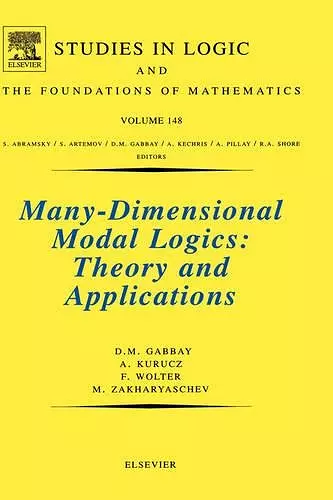Many-Dimensional Modal Logics: Theory and Applications
Dov M Gabbay author M Zakharyaschev author F Wolter author A Kurucz author
Format:Hardback
Publisher:Elsevier Science & Technology
Published:21st Oct '03
Currently unavailable, and unfortunately no date known when it will be back

Modal logics, originally conceived in philosophy, have recently found many applications in computer science, artificial intelligence, the foundations of mathematics, linguistics and other disciplines. Celebrated for their good computational behaviour, modal logics are used as effective formalisms for talking about time, space, knowledge, beliefs, actions, obligations, provability, etc. However, the nice computational properties can drastically change if we combine some of these formalisms into a many-dimensional system, say, to reason about knowledge bases developing in time or moving objects.To study the computational behaviour of many-dimensional modal logics is the main aim of this book. On the one hand, it is concerned with providing a solid mathematical foundation for this discipline, while on the other hand, it shows that many seemingly different applied many-dimensional systems (e.g., multi-agent systems, description logics with epistemic, temporal and dynamic operators, spatio-temporal logics, etc.) fit in perfectly with this theoretical framework, and so their computational behaviour can be analyzed using the developed machinery.We start with concrete examples of applied one- and many-dimensional modal logics such as temporal, epistemic, dynamic, description, spatial logics, and various combinations of these. Then we develop a mathematical theory for handling a spectrum of 'abstract' combinations of modal logics - fusions and products of modal logics, fragments of first-order modal and temporal logics - focusing on three major problems: decidability, axiomatizability, and computational complexity. Besides the standard methods of modal logic, the technical toolkit includes the method of quasimodels, mosaics, tilings, reductions to monadic second-order logic, algebraic logic techniques. Finally, we apply the developed machinery and obtained results to three case studies from the field of knowledge representation and reasoning: temporal epistemic logics for reasoning about multi-agent systems, modalized description logics for dynamic ontologies, and spatio-temporal logics.The genre of the book can be defined as a research monograph. It brings the reader to the front line of current research in the field by showing both recent achievements and directions of future investigations (in particular, multiple open problems). On the other hand, well-known results from modal and first-order logic are formulated without proofs and supplied with references to accessible sources.The intended audience of this book is logicians as well as those researchers who use logic in computer science and artificial intelligence. More specific application areas are, e.g., knowledge...
"This book will be a valuable reference for the modal logic researcher. It can serve as a brief but useful introduction (....) for the suitably qualified newcomer. And it contributes a careful and rewarding comprehensive account of some of the latest foundational results in the area of combining modal logics." --Mark Reynolds, The University of Western Australia. Studia Logica, 2004.
ISBN: 9780444508263
Dimensions: unknown
Weight: 1250g
766 pages